
The 1970s, often perceived through the lens of changing regulations and oil crises, was nevertheless a vibrant decade for automotive enthusiasts. While the raw, untamed power of the 1960s muscle car era began to evolve, it certainly didn’t disappear. Instead, the ’70s delivered a unique blend of performance, style, and an unexpected accessibility that makes many of its iconic vehicles particularly appealing to today’s collectors. This era was characterized by automakers finding ingenious ways to craft cars that still packed a punch and turned heads, even as the landscape of the automotive industry shifted.
For those with a deep passion for classic American iron, the good news is that owning a piece of this rich history doesn’t have to break the bank. Contrary to popular belief, many of these powerful and stylish machines from the 1970s can still be acquired at prices that represent incredible value. These aren’t just mere budget-friendly options; they are genuine muscle cars, offering thrilling performance, distinctive designs, and a tangible connection to a pivotal period in automotive history, all without demanding the premium commanded by their earlier counterparts.
We’re taking a deep dive into ten incredible muscle cars from the 1970s that are not only beautiful but are also surprisingly affordable in today’s market, based on Hagerty’s current valuations. Whether you’re a first-time classic car buyer or a seasoned enthusiast looking to expand your collection without draining your savings, these vehicles offer the perfect blend of nostalgia, power, and outstanding value. Prepare to ignite your passion for horsepower as we explore the first five machines on our must-have list.
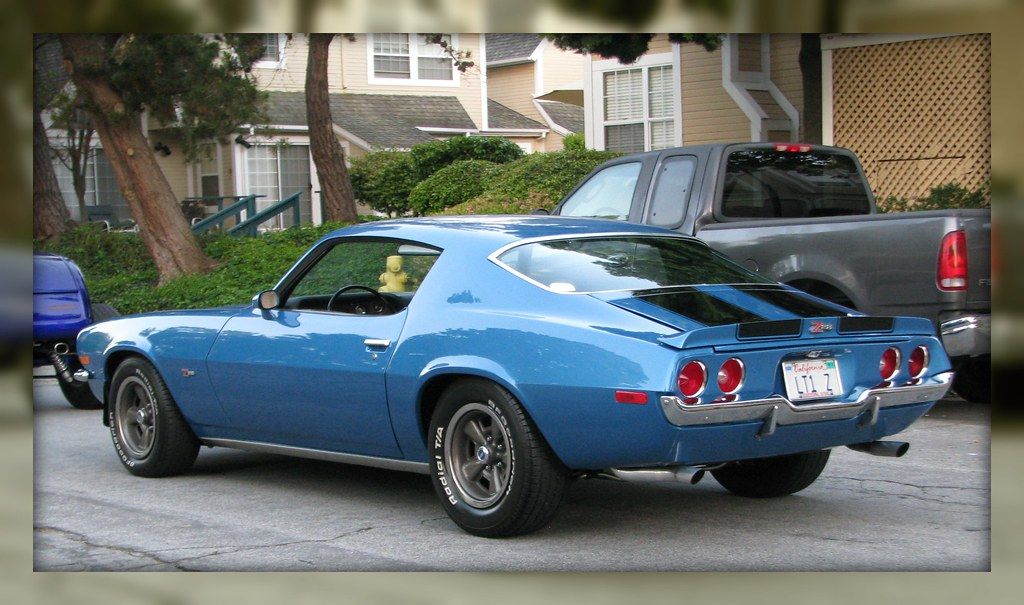
1. **1970 Chevrolet Camaro**The 1970 Chevrolet Camaro stands as an enduring emblem of American muscle, even in its most fundamental configuration. This second-generation F-body, introduced for the 1970 model year, immediately captured attention with its sleek, European-inspired styling, a significant departure from its predecessor. While the more celebrated SS and Z/28 variants often steal the spotlight with their high-performance accolades, the standard Camaro from this year represents a fantastic entry point into classic muscle car ownership. It blends iconic design with truly accessible pricing.
Under the hood, the base 1970 Camaro typically featured a robust 307-cubic inch V8 engine. This powerplant was capable of producing a respectable 200 horsepower. It provided a solid foundation for an engaging driving experience, offering ample acceleration for spirited cruises. Complementing this performance was a thoughtfully engineered sport-tuned suspension, which delivered a responsive and enjoyable ride compared to many other vehicles of its era.
Inside, the 1970 Camaro offered a comfortable and driver-focused cockpit. It often featured a durable vinyl interior and supportive bucket seats. These appointments created an environment that was both practical for daily driving and conducive to enjoying a performance vehicle. The overall design language, both inside and out, exuded a sense of purposeful athleticism, making it a desirable machine for enthusiasts and solidifying its place as a quintessential American performance car.
Today, this standard 1970 Chevrolet Camaro is a remarkably affordable classic, boasting an average market price of approximately $18,200. This valuation makes it an exceptionally attractive proposition for collectors seeking a true piece of muscle car history without a substantial investment. Its timeless design, combined with a respectable performance pedigree, ensures that even in its base form, the 1970 Camaro delivers a powerful statement and an authentic taste of the golden age of American performance.
Car Model Information: 2018 Chevrolet Camaro 1LS
Name: Chevrolet Camaro
Manufacturer: Chevrolet
Production: 1966–2002,2009–2023
ModelYears: 1967–2002,2010–2024
Class: Pony car
BodyStyle: coupe,convertible
Platform: GM F platform,GM Zeta platform,GM Alpha platform
Layout: Front-engine, rear-wheel-drive layout
Categories: 1970s cars, 1980s cars, 1990s cars, 2+2 coupés, 2000s cars
Summary: The Chevrolet Camaro is a mid-size American automobile manufactured by Chevrolet, classified as a pony car. It first went on sale on September 29, 1966, for the 1967 model year and was designed to compete with the Ford Mustang. The Camaro shared its platform and major components with the Firebird, produced by General Motors’ Pontiac division that was also introduced for the 1967 model year.
Four distinct generations of the Camaro were developed before production ended in 2002. The nameplate was revived on a concept car that evolved into the fifth-generation Camaro; production started on March 16, 2009.
Production of the sixth generation of the Camaro ended in December 2023, for the 2024 model year.
Get more information about: Chevrolet Camaro
Buying a high-performing used car >>>
Brand: Chevrolet Model: Camaro
Price: $19,125 Mileage: 69,196 mi.
Read more about: John Wick’s 1969 Mustang: How a Classic Car Became a Cinematic Icon
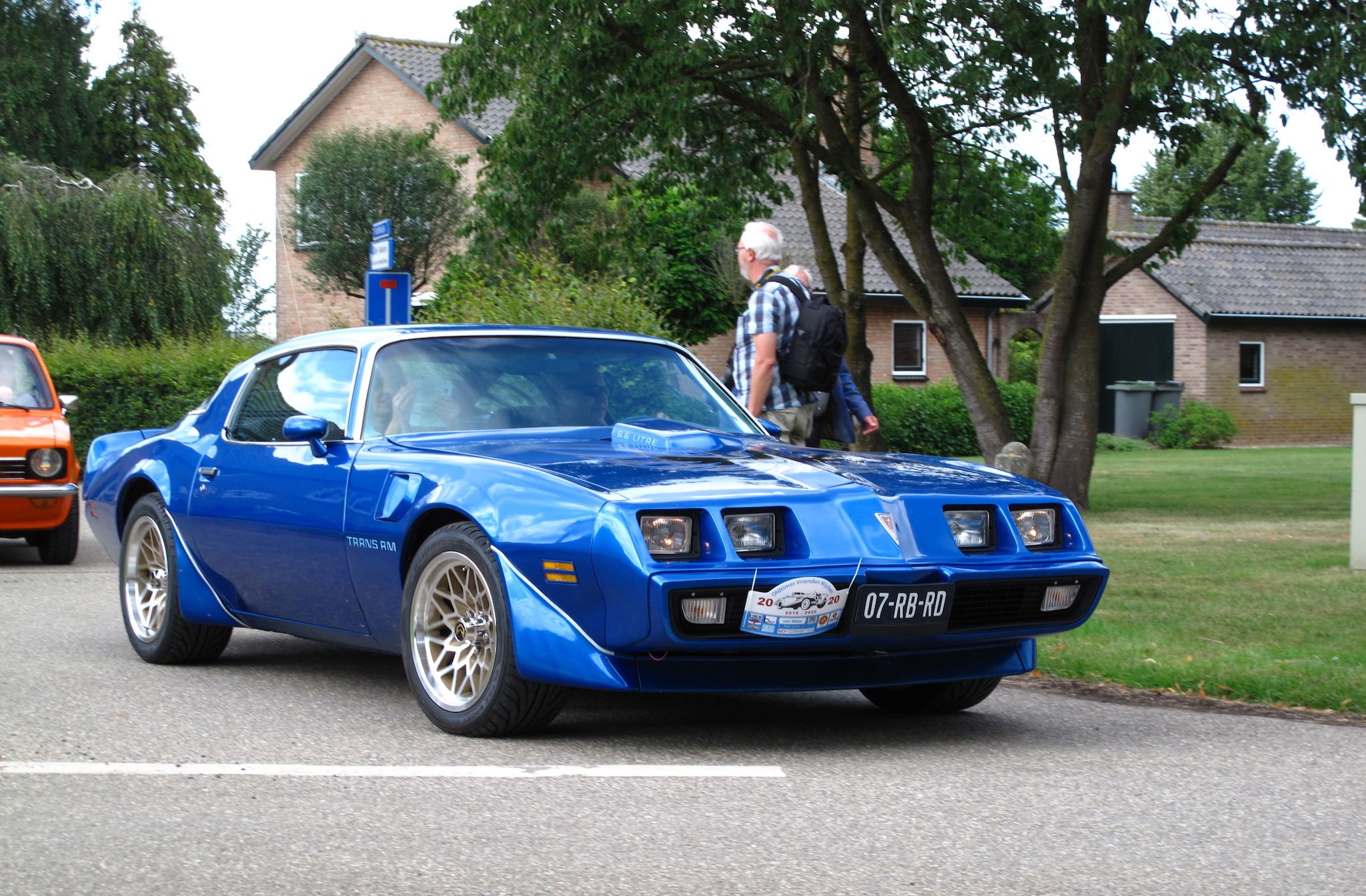
2. **1979 Pontiac Firebird Formula**The 1979 Pontiac Firebird Formula offers a compelling narrative of muscle car evolution within the tumultuous ’70s, presenting an excellent blend of performance and value. While its more famous sibling, the Trans Am, often garners the lion’s share of attention, the Formula variant carved its own niche as a serious contender. It provided a thrilling driving experience that was remarkably accessible. This model year benefited from a significant redesign, which contributed to its enhanced popularity and solidified its aesthetic appeal among enthusiasts.
At the heart of many 1979 Firebird Formulas was the potent W72 Pontiac 400 V8 engine. This impressive powerplant delivered 220 horsepower. It provided a substantial amount of torque and acceleration, ensuring that the Formula felt every bit the performance car it was designed to be. While perhaps not reaching the stratospheric performance figures of the most extreme muscle cars of earlier years, its output was more than enough to deliver a truly engaging and exhilarating ride.
The 1979 redesign brought with it a more refined and aggressive styling, contributing to the car’s overall appeal. The Firebird Formula, in particular, maintained a slightly more understated but undeniably muscular aesthetic compared to the often flamboyant Trans Am. This subtle aggression appealed to a segment of buyers who appreciated performance without excessive ornamentation, making it a preferred choice for those who valued the substance of its engineering.
Currently, the 1979 Pontiac Firebird Formula stands as an excellent option for muscle car fans looking for affordability, with an average price tag of around $29,300. This pricing positions it as a significantly more budget-friendly alternative to the Trans Am, yet it delivers much of the same visceral driving pleasure and classic ’70s styling. Its blend of historical significance, solid performance, and relative affordability makes it a smart acquisition for anyone passionate about American muscle.
Car Model Information: 1983 Pontiac Firebird Trans Am 2D Coupe
Name: Pontiac Firebird
Caption: The second, third, and fourth generations of,the Pontiac Firebird Trans Am
Manufacturer: Pontiac (automobile)
Production: February 23, 1967 – August 30, 2002
ModelYears: 1967 – 2002
Class: Pony car,Muscle car
Platform: GM F platform
Related: Chevrolet Camaro
Layout: Front engine, rear-wheel-drive layout
Categories: 1970s cars, 1980s cars, 1990s cars, 2000s cars, All articles with dead external links
Summary: The Pontiac Firebird is an American automobile built and produced by Pontiac from the 1967 to 2002 model years. Designed as a pony car to compete with the Ford Mustang, it was introduced on February 23, 1967, five months after GM’s Chevrolet division’s platform-sharing Camaro. This also coincided with the release of the 1967 Mercury Cougar, Ford’s upscale, platform-sharing version of the Mustang.
The name “Firebird” was also previously used by GM for the General Motors Firebird series of concept cars in the 1950s.
Get more information about: Pontiac Firebird
Buying a high-performing used car >>>
Brand: Pontiac Model: Firebird
Price: $22,991 Mileage: 38,257 mi.
Read more about: Boomers, Get Ready to Rev! These 12 Iconic ’60s Car Models Still Drive Our Dreams
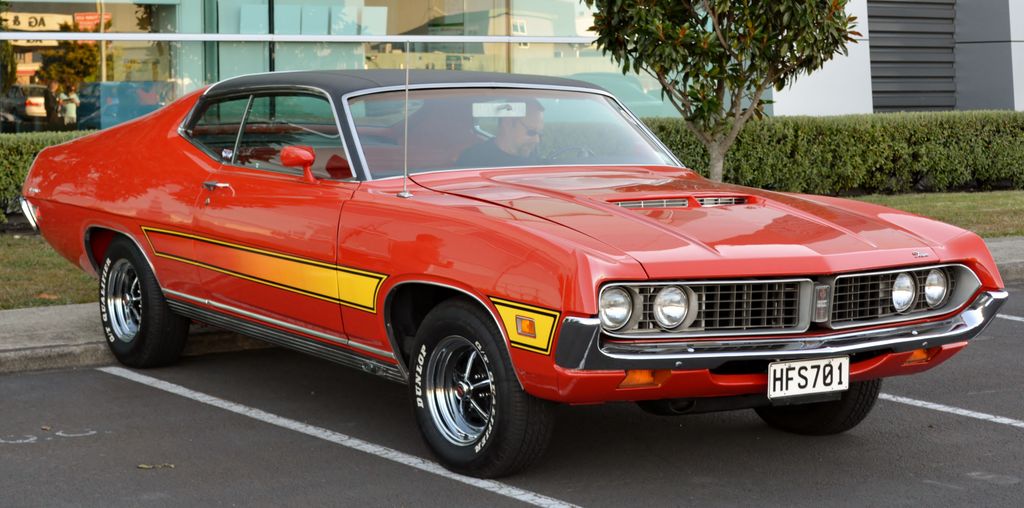
3. **1971 Ford Torino GT**The 1971 Ford Torino GT represents a formidable presence in the pantheon of ’70s muscle cars. It stands out as one of the most powerful and visually striking options available during its era. This particular model year marked a significant design evolution for the Torino, adopting a more aggressive, aerodynamic “jet-intake” grille and pronounced body lines. These features gave it an undeniable road presence.
Under the expansive hood of the 1971 Ford Torino GT, a truly monstrous engine could be found: the 7.0-liter 385 Series V8. This powerhouse was engineered to deliver serious performance, churning out a staggering 370 horsepower. This immense output positioned the Torino GT as a top-tier performer, capable of delivering exhilarating acceleration and high-speed prowess that could rival any contemporary muscle machine. Even without a functional hood scoop, the engine’s capabilities spoke for themselves, making it a formidable force on the asphalt.
Beyond its raw power, the Torino GT presented a package that balanced performance with a distinctly stylish design. Its bold lines and commanding stance embodied the aggressive aesthetic that defined the muscle car genre of the early ’70s. The car was not just about brute force; it was also about making a visual statement, and its design has aged gracefully. It continues to captivate enthusiasts who appreciate the unapologetic style of the period.
For collectors today, the 1971 Ford Torino GT offers an exceptional combination of speed, power, and classic ’70s aesthetic appeal at a remarkably reasonable cost. With an average price of $26,400, it stands as an outstanding value proposition for anyone seeking a true high-performance muscle car that doesn’t demand a six-figure investment. It’s a testament to Ford’s engineering prowess during a challenging decade, delivering a thrilling and authentic muscle car experience.
Car Model Information: 2021 Chrysler Pacifica Touring
Aka: Ford Fairlane (Venezuela)
Name: Ford Torino
Caption: 1970 Ford Torino Cobra SportsRoof
Manufacturer: Ford Motor Company
Production: 1968–1976
Class: Mid-size car,muscle car
Layout: FR layout
Related: Mercury Montego
Assembly: ubl
Predecessor: Ford Fairlane (Americas)
Successor: Ford LTD II
Categories: 1960s cars, 1970s cars, All Wikipedia articles written in American English, All articles with vague or ambiguous time, Articles with short description
Summary: The Ford Torino is an automobile that was produced by Ford for the North American market between 1968 and 1976. It was a competitor in the intermediate market segment and essentially a twin to the Mercury Montego line.
Just as the Ford LTD had been the upscale version of the Ford Galaxie, the Torino was initially an upscale variation of the intermediate-sized Ford Fairlane. In the 1968 and 1969 model years, the intermediate Ford line consisted of lower-trim Fairlanes and its subseries, the upper-trim Torino models. In 1970, Torino became the primary name for Ford’s intermediate, and the Fairlane was now a subseries of the Torino. In 1971, the Fairlane name was dropped altogether, and all Ford intermediates were called Torino.
Most Torinos were conventional cars, and generally the most popular models were the four-door sedans and two-door hardtops. However, Ford produced some high-performance “muscle car” versions of the Torino by fitting them with large powerful engines, such as the 428 cu in (7.0 L) and 429 cu in (7.0 L) “Cobra-Jet” engines. Ford also chose the Torino as the base for its NASCAR entrants, and it has a successful racing heritage.
Get more information about: Ford Torino
Buying a high-performing used car >>>
Brand: Ford Model: Torino GT
Price: $24,995 Mileage: 41,216 mi.
Read more about: Unearthing the Power: 14 Underrated Small-Block V8 Muscle Cars That Deliver Classic Style and Serious Punch on a Budget
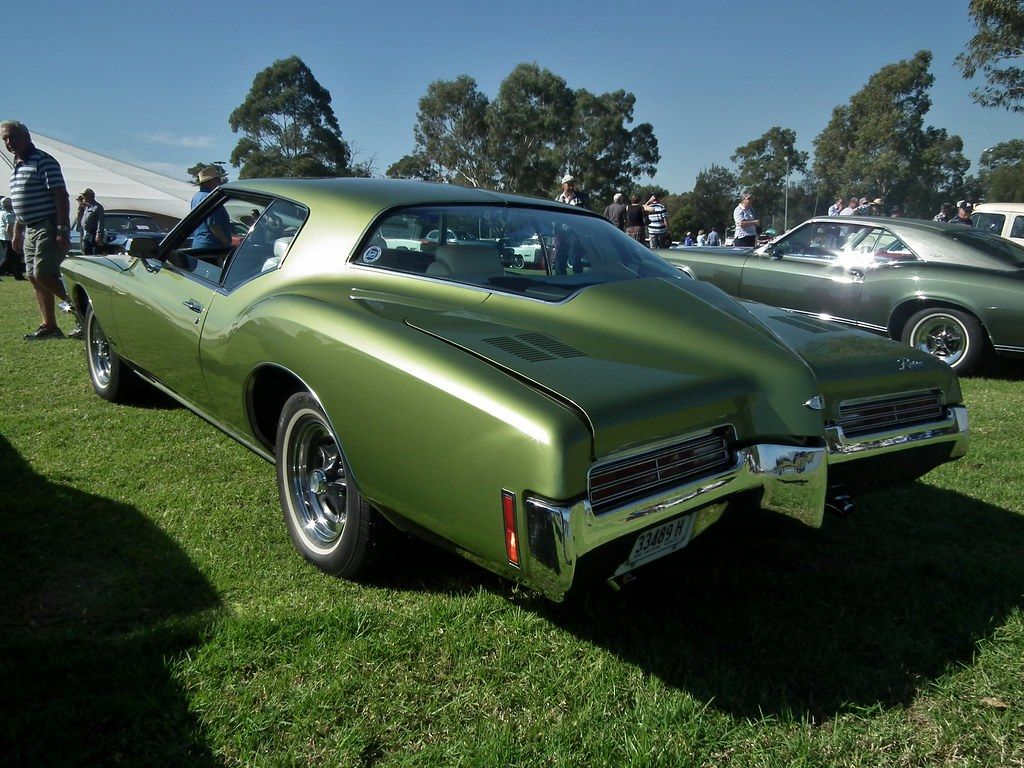
4. **1971 Buick Riviera GS**The 1971 Buick Riviera GS is a distinctive blend of luxury and raw muscle, a grand touring car that defied conventional categorizations in the early 1970s. Its iconic “boat tail” design, a bold and divisive styling cue penned by Bill Mitchell, instantly set it apart from anything else on the road. This radical aesthetic, characterized by its dramatically sloping rear and fastback profile, made the Riviera GS not just a car, but a rolling sculpture. It encapsulated a unique vision for American luxury performance that continues to command admiration today.
Beneath its striking sheet metal, the Riviera GS was engineered for both comfort and exhilarating power. It came equipped with a formidable 455-cubic inch V8 engine, which, in its GS iteration, produced a robust 315 horsepower. This engine delivered substantial torque, allowing for effortless cruising and impressive acceleration when called upon. The “Gran Sport” package further enhanced its performance credentials, featuring an enhanced suspension system designed to provide a more engaging and controlled ride.
The GS model also benefited from other performance-oriented features, such as dual exhaust. This not only contributed to its power output but also provided a deeper, more aggressive exhaust note, signaling its performance intentions. This combination of a potent engine, refined suspension, and upscale features created a driving experience that was both comfortable for long journeys and thrilling during spirited drives. It truly embodied the spirit of a luxury muscle car.
Currently, the 1971 Buick Riviera GS presents an outstanding value for enthusiasts looking for a muscle car with a touch of sophistication. Available for an average price of $21,300, it offers a rare opportunity to own a genuinely unique and powerful classic without an exorbitant price tag. Its distinctive styling, formidable performance, and luxurious appointments make it an excellent choice for those who desire a performance-oriented cruiser that stands out from the crowd and offers a distinctive piece of automotive history.
Car Model Information: 2021 Chrysler Pacifica Touring
Caption: 1963 Buick Riviera
Name: Buick Riviera
Predecessor: Buick Super
Manufacturer: Buick
ModelYears: 1963–1993,1995–1999
Class: Personal luxury car
Categories: 1960s cars, 1970s cars, 1980s cars, 1990s cars, All articles with specifically marked weasel-worded phrases
Summary: The Buick Riviera is a personal luxury car that was marketed by Buick from 1963 to 1999, with the exception of the 1994 model year.
As General Motors’ first entry into the personal luxury car market segment, the Riviera was highly praised by automotive journalists upon its high-profile debut. It was a ground-up design on a new GM E platform debuting for the 1963 model year and was also Buick’s first unique Riviera model.
Unlike its subsequent GM E platform stablemates, the Oldsmobile Toronado and Cadillac Eldorado, the Riviera was initially a front engine/rear-wheel drive platform, switching to front-wheel drive starting with the 1979 model year.
While the early models stayed close to their original form, eight subsequent generations varied substantially in size and styling. A total of 1,127,261 Rivieras were produced.
The Riviera name was resurrected for two concept cars that were displayed at auto shows in 2007 and in 2013.
Get more information about: Buick Riviera
Buying a high-performing used car >>>
Brand: Buick Model: Riviera GS
Price: $24,995 Mileage: 41,216 mi.
Read more about: The Road Less Traveled (and Valued): 14 Classic Cars That Are Now Worth Less Than You Think
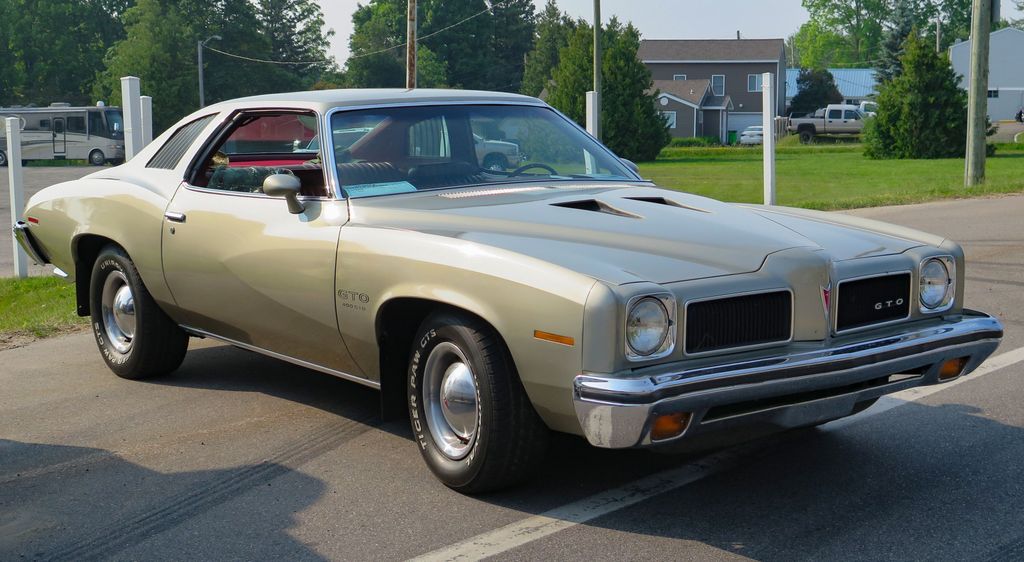
5. **1973 Pontiac LeMans GTO**The 1973 Pontiac LeMans GTO holds a significant place in muscle car history, marking the final year for the GTO as a standalone model. This iteration was integrated into the LeMans lineup, reflecting industry trends where performance vehicles adapted to new regulations. Despite these changes, the 1973 LeMans GTO managed to retain much of the raw appeal and spirit that had made its predecessors legendary. Its brief hiatus before returning as an option package underscores its unique position.
Powering the 1973 LeMans GTO was a capable 400-cubic inch V8 engine, which generated 230 horsepower. While this output was somewhat detuned compared to the stratospheric figures of late 1960s GTOs, it still provided a thoroughly enjoyable and engaging driving experience. The car offered strong low-end torque and satisfying acceleration, ensuring that it still felt like a true muscle car, capable of spirited performance on the open road. It was a testament to Pontiac’s ability to adapt and continue delivering performance.
The styling of the 1973 LeMans GTO adopted the new “colonnade” body design shared with other GM intermediates. It featured large, fixed rear-side windows and a more substantial front end. While different from earlier GTOs, it still carried a distinctive muscular presence, especially when equipped with characteristic GTO styling cues like the unique grille and functional hood scoops. These elements ensured that the GTO, even within the LeMans family, continued to project an image of undeniable performance.
Remarkably, the 1973 Pontiac LeMans GTO stands today as an incredibly affordable classic, with average prices hovering around $11,900. This makes it one of the most budget-friendly ways to own a piece of the revered GTO legend. Despite the performance compromises dictated by its era, it offers excellent value for collectors and enthusiasts who wish to experience the essence of a GTO without the premium price tag of earlier, higher-horsepower models. It’s a compelling piece of history that remains accessible.
Having explored the initial selections that demonstrate the enduring value of ’70s muscle, we now turn our attention to the remaining five standout machines. These vehicles further exemplify how the decade, often misjudged, consistently delivered powerful and stylish cars that are surprisingly within reach for today’s enthusiasts. From hidden gems to utility-infused performers, these classics offer distinct characteristics, an undeniable market appeal, and continue to solidify their status as budget-friendly treasures for those passionate about American automotive heritage.
Car Model Information: 2021 Chrysler Pacifica Touring
Caption: 1971 Pontiac LeMans Sport hardtop
Name: Pontiac LeMans
Manufacturer: Pontiac (automobile)
Production: 1961–1981 (U.S.),1971–1983 (Canada),1988–1993 (South Korea)
Class: Compact car
Successor: Pontiac 6000
Categories: 1970s cars, 1980s cars, All Wikipedia articles needing clarification, All articles with unsourced statements, Articles with short description
Summary: The Pontiac LeMans is a model name applied to automobiles marketed by Pontiac. The name came from the French city of Le Mans, the site of the 24 Hours of Le Mans, the world’s oldest active sports car endurance race that was first held in 1923. Originally a trim upgrade package based on the Tempest, the LeMans became a separate model in 1963.
In its first five generations spanning from 1961 until 1981 (1983 in Canada), the LeMans was a domestic RWD car; the first generation was a compact, with Gens 2-5 intermediates. From 1988 through 1993 the LeMans name was resurrected for a sixth generation, a FWD subcompact badge-engineered version of the Daewoo LeMans manufactured by Daewoo in South Korea.
Pontiac produced some notable GT/performance versions in the RWD models. The 1st generation not only featured a front-engine/rear-transaxle that very nearly resulted in an ideal 50/50 weight distribution, but also included four-wheel independent suspension for nimble handling, and could be ordered with an optional Buick 215 aluminum V8 engine.
The Pontiac GTO is credited with popularizing the muscle car market segment of the 1960s, and by many as the first muscle car. The 1970 model year introduced the LeMans GT-37 package. The 1973-75 Grand Am and 1977 Can Am combined luxury with performance features to emulate European coupes, focusing on balancing handling with power.
Get more information about: Pontiac LeMans
Buying a high-performing used car >>>
Brand: Pontiac Model: LeMans GTO
Price: $24,995 Mileage: 41,216 mi.
Read more about: Boomers, Get Ready to Rev! These 12 Iconic ’60s Car Models Still Drive Our Dreams
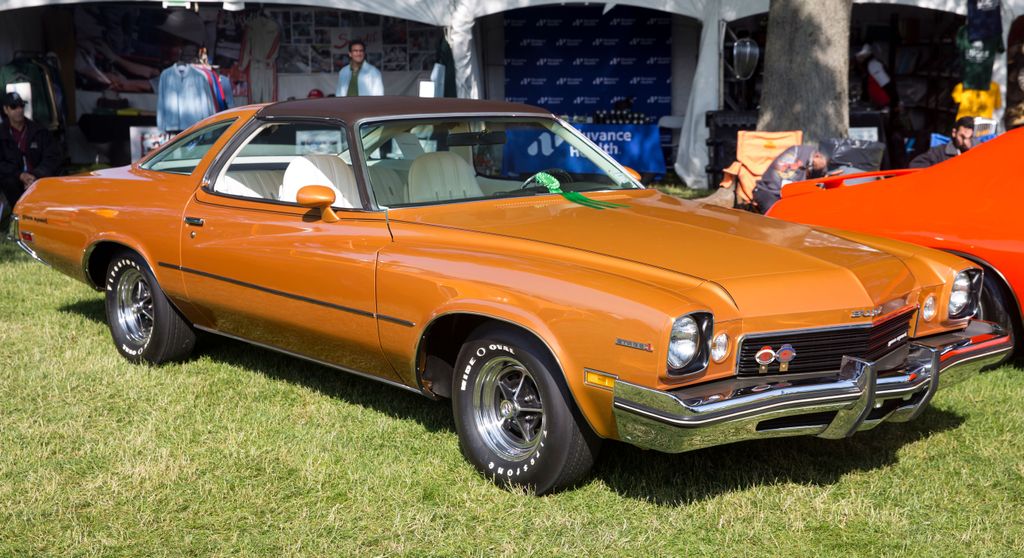
6. **1973 Buick Century Gran Sport 455 Stage I**The 1973 Buick Century Gran Sport 455 Stage I presents a fascinating case study in understated muscle. At first glance, it might not project the overtly aggressive stance of its muscle car brethren, allowing it to move somewhat under the radar. However, beneath its more conventional exterior lies a powertrain designed for serious performance, making it a true ‘sleeper’ among ’70s classics and an intriguing option for collectors who appreciate power without the typical fanfare.
This Gran Sport model was powered by a formidable 455-cubic inch V8 engine. While official ratings for this period were often conservative, this Stage I iteration was estimated to produce around 270 horsepower. Yet, many enthusiasts and historians suggest its actual output could have been closer to a robust 360 horsepower, which places it firmly in the upper echelons of muscle car performance for its era. Such a potent engine ensures that this Buick delivers an exhilarating driving experience.
The allure of the 1973 Buick Century Gran Sport 455 Stage I lies in this unexpected power coupled with its refined Buick heritage. It offered a comfortable ride and a degree of luxury typically associated with the brand, while still being capable of surprising many with its raw acceleration. This dual nature makes it a uniquely appealing choice for those who want a blend of comfort and genuine muscle, without sacrificing either.
Today, this potent Buick is an exceptional find for collectors, carrying an average market price of approximately $20,200. This valuation positions it as an outstanding value, particularly given the impressive performance capabilities it offers. For those seeking a muscle car that delivers plenty of hidden power and a unique story, the 1973 Buick Century Gran Sport 455 Stage I is a compelling and often overlooked classic.
Car Model Information: 2002 Buick Century Custom
Name: Buick Century
Manufacturer: Buick
ModelYears: 1936–1942,1954–1958,1973–2005
Class: Full-size car,Mid-size car
BodyStyle: coupe,sedan (car),station wagon
Layout: FR layout,Front-engine, front-wheel-drive layout
Predecessor: Buick Master Six
Successor: Buick LaCrosse,Buick Regal#Regal TourX
Categories: 1930s cars, 1940s cars, 1950s cars, 1970s cars, 1980s cars
Summary: Buick Century is the model name that was used by Buick for a line of upscale full-size cars from 1936 to 1942 and 1954 to 1958, as well as from 1973 to 2005 for mid-size cars.
The first Buick Century debuted as the Series 60 then renamed in 1936 as a shorter and lighter model featuring the same engine as the bigger Roadmaster and Limited series giving it more performance while using the shorter wheelbase body of the Buick Special. During the 1930s and 1940s it was Buick’s companion to the top level Roadmaster and was offered as a 2-door and 4-door sedan and convertible. The Century name was used on six generations of cars of varying sizes as well as performance and trim levels. In 1969, Buick developed a concept car known as the Century Cruiser. In the 1970s, the Century Regal became a separate model and market positioning between the two products changed from year to year depending on sales. The Century was updated to front wheel drive in 1982 and was Buick’s 2-door coupe, 4-door sedan and station wagon, with regular updates and feature upgrades as customer preferences changed over time.
Get more information about: Buick Century
Buying a high-performing used car >>>
Brand: Buick Model: Century
Price: $4,999 Mileage: 162,991 mi.
Read more about: Beyond the Chrome: A Deep Dive into 12 Iconic 1960s Luxury Car Ads That Defined a Golden Era of Automotive Storytelling
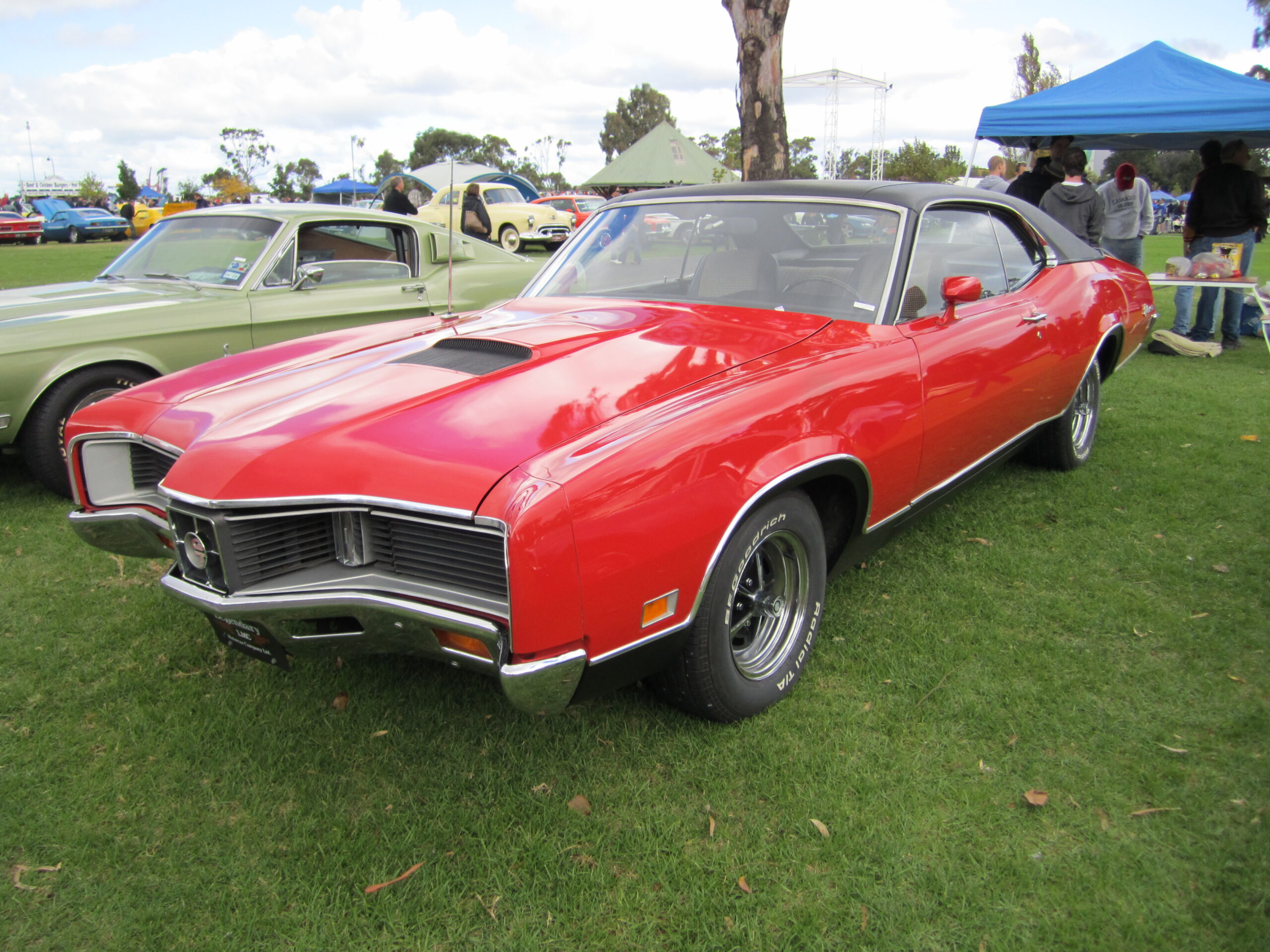
7. **1970 Mercury Cyclone GT**The 1970 Mercury Cyclone GT represents an interesting fusion of luxury and performance, embodying Mercury’s distinct approach to the muscle car formula. While perhaps not as overtly dominant in horsepower figures as some of its contemporaries, the Cyclone GT nevertheless delivered a solid and engaging driving experience. Its design, characterized by a more refined aesthetic, set it apart within the competitive landscape of early 1970s American performance vehicles.
Under the hood, the Cyclone GT was equipped with a robust 351-cubic inch V8 engine, which was capable of producing a respectable 250 horsepower. This powerplant provided a strong balance of everyday drivability and the spirited acceleration expected from a GT-badged model. Complementing this engine was a standard three-speed manual transmission, offering a direct and engaging connection for the driver who preferred to be more involved in the driving process.
Beyond its mechanicals, the 1970 Mercury Cyclone GT also integrated several high-end features, reflecting Mercury’s slightly more upscale positioning compared to its Ford stablemates. These features contributed to a more luxurious feel inside the cabin, elevating the overall driving and ownership experience. The combination of a sport-tuned suspension and these comfort-oriented details created a well-rounded vehicle that appealed to a discerning segment of performance enthusiasts.
Currently, the 1970 Mercury Cyclone GT remains an underrated classic, offering an excellent opportunity for collectors at an average price of around $19,300. This makes it an attractive proposition for those seeking a muscle car that strikes a fine balance between performance and a touch of refinement. It’s a superb choice for enthusiasts looking for a distinctive and affordable piece of American automotive history that stands out from the more common muscle car offerings.
Car Model Information: 2021 Chrysler Pacifica Touring
Name: Mercury (Comet) Cyclone
Caption: 1971 Mercury Cyclone GT
Manufacturer: Mercury (automobile)
ModelYears: 1964–1971
Class: Muscle car
Layout: FR layout
Predecessor: Mercury Comet
Successor: Mercury Cougar#Third generation (1974–1976)
Related: Mercury Comet,Ford Fairlane (Americas),Mercury Montego,Ford Torino Talladega
BodyStyle: coupe
Categories: 1970s cars, Articles with short description, Cars introduced in 1964, Commons category link from Wikidata, Coupés
Summary: The Mercury Cyclone is an automobile that was marketed by the Mercury division of Ford from 1964 to 1971. Introduced in 1964 as the Mercury Comet Cyclone, the Cyclone replaced the S-22 as the performance-oriented version of the Mercury Comet model line. The Cyclone became a distinct nameplate for the 1968 model year, as the Mercury Montego was phased in to replace the Comet.
Within Mercury, the Cyclone was positioned between the Cougar pony car and the Marquis/Marauder full-size two-doors. Though largely overshadowed by the Cougar, the Cyclone was positioned as a muscle car, representing the Mercury brand in racing as a clone of the Ford Fairlane Thunderbolt.
Four generations of the Cyclone were produced, with production ending after the 1971 model year. For the 1972 model year, the Cyclone returned as an option package for the Montego; only 30 examples were produced. Within the Mercury line, the Cyclone was not directly replaced. The Cougar XR7 was repackaged as a personal luxury version of the Montego for 1974.
Get more information about: Mercury Cyclone
Buying a high-performing used car >>>
Brand: Mercury Model: Cyclone GT
Price: $24,995 Mileage: 41,216 mi.
Read more about: Unearthing the Power: 14 Underrated Small-Block V8 Muscle Cars That Deliver Classic Style and Serious Punch on a Budget

8. **1971 Chevrolet El Camino SS**The 1971 Chevrolet El Camino SS masterfully blends the utility of a pickup truck with the exhilarating performance of a muscle car, offering a versatile machine that truly offers the best of both worlds. This unique combination made the El Camino SS a highly practical yet undeniably powerful vehicle, appealing to those who needed functionality but refused to compromise on horsepower and style. It was a testament to American ingenuity in automotive design.
Central to the El Camino SS’s appeal was its capable 350-cubic inch V8 engine, which generated 270 horsepower. While the legendary 454 cubic inch models often garner more attention for their sheer brute force, the 350 SS variant provided a thoroughly strong and engaging muscle car performance. This engine delivered ample torque for hauling and impressive acceleration for open-road cruising, ensuring it lived up to its Super Sport designation.
The El Camino’s design, with its distinctive car-like front end flowing into a functional pickup bed, gave it a unique identity on the road. The SS package further enhanced its visual impact with specific badging, stripes, and other performance-oriented styling cues. These elements transformed what could have been a mere utility vehicle into a desirable and potent machine, capable of turning heads and handling tasks with equal aplomb.
For collectors today, the 1971 Chevrolet El Camino SS, particularly the 350 model, represents a fantastic buy, with average prices hovering around $31,900. While slightly higher than some other entries on our list, its dual nature as both a practical utility vehicle and a genuine muscle car offers exceptional value. It is the perfect choice for enthusiasts who desire a classic that combines robust performance with the undeniable practicality of a truck, embodying a truly unique segment of ’70s automotive heritage.
Car Model Information: 2021 Chrysler Pacifica Touring
Name: Chevrolet El Camino
Caption: 1969 El Camino SS
Manufacturer: Chevrolet
ModelYears: 1959–1960 ,1964–1987
Layout: Front-engine, rear-wheel-drive layout,rear-wheel drive
Class: Coupé utility,Muscle car
Categories: 1960s cars, 1970s cars, 1980s cars, All articles lacking reliable references, All articles needing additional references
Summary: The Chevrolet El Camino is a coupé utility vehicle that was produced by Chevrolet between 1959–1960 and 1964–1987. Unlike a standard pickup truck, the El Camino was adapted from the standard two-door Chevrolet station wagon platform and integrated the cab and cargo bed into the body.
Introduced in the 1959 model year in response to the success of the Ford Ranchero coupé utility, its first run, based on the Biscayne’s B-body, lasted only two years. Production resumed for the 1964–1977 model years based on the Chevelle platform, and continued for the 1978–1987 model years based on the GM G-body platform.
Although based on corresponding General Motors car lines, the vehicle is classified in the United States as a pickup. GMC’s badge engineered El Camino variant, the Sprint, was introduced for the 1971 model year. Renamed Caballero in 1978, it was also produced through the 1987 model year.
Get more information about: Chevrolet El Camino
Buying a high-performing used car >>>
Brand: Chevrolet Model: El Camino SS
Price: $24,995 Mileage: 41,216 mi.
Read more about: Dwayne ‘The Rock’ Johnson Stuns Fans with Unrecognizable New Look: A Deep Dive into His Career Evolution and Coveted Car Collection

9. **1974 Dodge Dart Sport 360**The 1974 Dodge Dart Sport 360 stands as a shining example of an incredibly budget-friendly muscle car, offering an impressive performance punch in a compact package. Despite the overall decline in popularity of the Dart line in the early 1970s, this particular Sport 360 model distinguished itself by retaining a strong focus on power and driver engagement. It serves as a testament to Dodge’s commitment to delivering performance even amidst shifting market preferences.
At its core, the Dart Sport 360 was propelled by a potent 5.9-liter (360-cubic inch) V8 engine, which generated a healthy 245 horsepower. This robust powerplant ensured that the compact Dart Sport was more than capable of delivering exciting acceleration and a spirited driving experience. Its relatively lighter weight compared to larger muscle cars of the era meant that this power translated into particularly lively performance, making it a joy on twisty roads and straightaways alike.
The styling of the Dart Sport 360, while adhering to the compact sensibilities of its family, still carried a distinct muscular appeal. Its aggressive stance and sporty lines, especially when equipped with performance-oriented options, hinted at the power lurking beneath the hood. It wasn’t just about raw speed; it was also about offering a nimble and responsive driving dynamic that appealed to a broad range of driving enthusiasts.
Remarkably, the 1974 Dodge Dart Sport 360 is currently the most affordable option on our list, boasting an average market price of just $9,000. This incredible value makes it an unparalleled entry point into the world of classic muscle cars. For anyone looking to experience the thrill of ’70s American performance without a substantial financial outlay, the Dart Sport 360 is an absolute must-consider, offering exceptional bang for the buck and an authentic slice of automotive history.
Car Model Information: 2021 Chrysler Pacifica Touring
Name: Dodge Dart
Caption: 1966 Dodge Dart GT 2-door hardtop
Manufacturer: Dodge
Production: 1959–1976 (US market)
ModelYears: 1960–1976 (US market)
Class: Full-size
Layout: FR layout
Predecessor: Dodge Coronet#Fourth generation (1957–1959)
Related: Plymouth Valiant,Chrysler Valiant,Dodge Phoenix
Successor: Dodge Aspen,Dodge Diplomat,Talbot Tagora
Categories: 1970s cars, All articles with unsourced statements, Articles with short description, Articles with unsourced statements from December 2023, Articles with unsourced statements from May 2025
Summary: The Dodge Dart is a line of passenger cars produced by Dodge from the 1959 to 1976 model years in North America, with production extended to later years in various other markets.
The production Dodge Dart was introduced as a lower-priced full-size model in 1960 and 1961, but became a mid-size car for one model year for 1962, and was then reduced to a compact for two generations, from 1963 to 1976.
Chrysler had first used ‘Dart’ name plates on two Italian styled show cars, in 1956 and 1957, before it became a Dodge model name. The Dart nameplate was resurrected for a Fiat-derived compact car that was introduced in 2012.
Get more information about: Dodge Dart
Buying a high-performing used car >>>
Brand: Dodge Model: Dart Sport 360
Price: $24,995 Mileage: 41,216 mi.
Read more about: Unearthing the Power: 14 Underrated Small-Block V8 Muscle Cars That Deliver Classic Style and Serious Punch on a Budget

10. **1973 Plymouth Gold Duster**The 1973 Plymouth Gold Duster masterfully combines distinctive style, commendable handling, and genuine muscle car power in an often-overlooked package. While not explicitly marketed as a high-performance vehicle in the same vein as some dedicated muscle machines, the Gold Duster delivered an impressive performance experience that belied its more practical branding. It offered a compelling blend for buyers seeking both utility and excitement.
Central to its capability was the inclusion of a formidable 340-cubic inch V8 engine, which, in early models, produced a potent 275 horsepower. This engine provided a robust foundation for spirited driving, ensuring that the Gold Duster could hold its own against many performance cars of the era. The Duster’s relatively lightweight platform also contributed to its agile handling characteristics, making it a surprisingly fun and responsive car to drive.
What truly set the 1973 Plymouth Gold Duster apart was its unique aesthetic, characterized by its distinctive gold trim and eye-catching decals. These styling cues gave it a unique visual presence that has aged remarkably well, making it a visually appealing classic today. This blend of individualistic styling with solid performance and practical dimensions made it a popular choice, particularly for younger drivers seeking something a bit different.
Today, the 1973 Plymouth Gold Duster stands as one of the best-value muscle cars from the 1970s, available at an average price of $14,300. Its unique blend of style, capable handling, and genuine V8 power, all wrapped up in an affordable package, makes it an excellent choice for collectors. For those looking to own a piece of ’70s automotive charm that delivers both charisma and exhilarating performance without breaking the bank, the Gold Duster shines brightly as an accessible classic.
Car Model Information: 2021 Chrysler Pacifica Touring
Name: Plymouth Duster
Caption: 1970 Plymouth Duster 340
Manufacturer: Plymouth (automobile)
Production: 1969–1976
ModelYears: 1970–1976
Assembly: Hamtramck, Michigan,Commerce, California,Fenton, Missouri,Windsor, Ontario
Designer: Milt Antonick and Neil Walling
Class: Compact car
BodyStyle: coupe
Layout: Front-engine, rear-wheel-drive layout
Platform: Chrysler A platform
Related: Plymouth Valiant,Dodge Dart
Engine: {{convert,198,cuin,L,1,abbr=on,Chrysler Slant 6 engine,Straight-six engine
Abbr: on
Transmission: manual transmission,4-speed manual,TorqueFlite
Wheelbase: 108.0 in
Predecessor: Plymouth Barracuda
Successor: Plymouth Volare,Plymouth Gran Fury
Categories: 1970s cars, All Wikipedia articles needing clarification, All articles with dead YouTube links, Articles with dead YouTube links from February 2022, Articles with short description
Summary: The original Plymouth Duster is a semi-fastback two-door coupe version of the compact-sized Plymouth Valiant automobile that was marketed by Plymouth in the U.S. from 1970 until 1976 model years.
Get more information about: Plymouth Duster
Buying a high-performing used car >>>
Brand: Plymouth Model: Gold Duster
Price: $24,995 Mileage: 41,216 mi.
Read more about: The End of an Era: 14 Iconic Muscle Cars That Roared into Automotive History But Faded from the Mainstream
As we conclude our journey through these ten incredible machines, it becomes abundantly clear that the 1970s were far from a barren wasteland for performance vehicles. In fact, for the astute collector or the burgeoning enthusiast, this decade represents a veritable goldmine of opportunity. These cars—each a testament to enduring design, robust engineering, and a unique place in history—offer a pathway to classic car ownership that is both thrilling and financially sensible. They are more than just vehicles; they are portals to an era where horsepower still reigned, and distinctive style was celebrated, all waiting to ignite your passion for the open road without requiring a king’s ransom. Dive in, and rediscover the roar of these budget-friendly beasts; the muscle car dream is more attainable than you think.



